What is a garage sill ?
A garage sill is a special type of sill placed at the entrance to a garage, usually where the garage door meets the floor or driveway. The garage sill performs several important functions:
1. Watershed: One of the main functions of a garage sill is to stop water from entering. It prevents rainwater, melting snow, or other forms of moisture from entering the garage, which can prevent water damage or moisture problems.
2. Draught and dirt barrier: The garage sill also helps keep drafts, dust, leaves, and other debris out of the garage. This contributes to a cleaner and better-insulated space, especially if the garage is also used as a storage area or workshop.
3. Garage door protection: The sill helps protect the bottom of the garage door from wear and damage from contact with the floor or driveway. This can extend the life of the door and provide a better seal.
4. Improved insulation: By creating a tighter seal between the garage door and the floor, a garage sill can help improve garage insulation, which is important if the garage is heated or directly adjacent to living spaces.
5. Safety and stability: The garage sill can also contribute to safety by providing a stable and even transition between the driveway and garage floor, reducing the risk of tripping or accidents.
6. Aesthetics and finishing: A garage sill can improve the visual transition between the driveway and the garage floor, providing a neat and finished look.
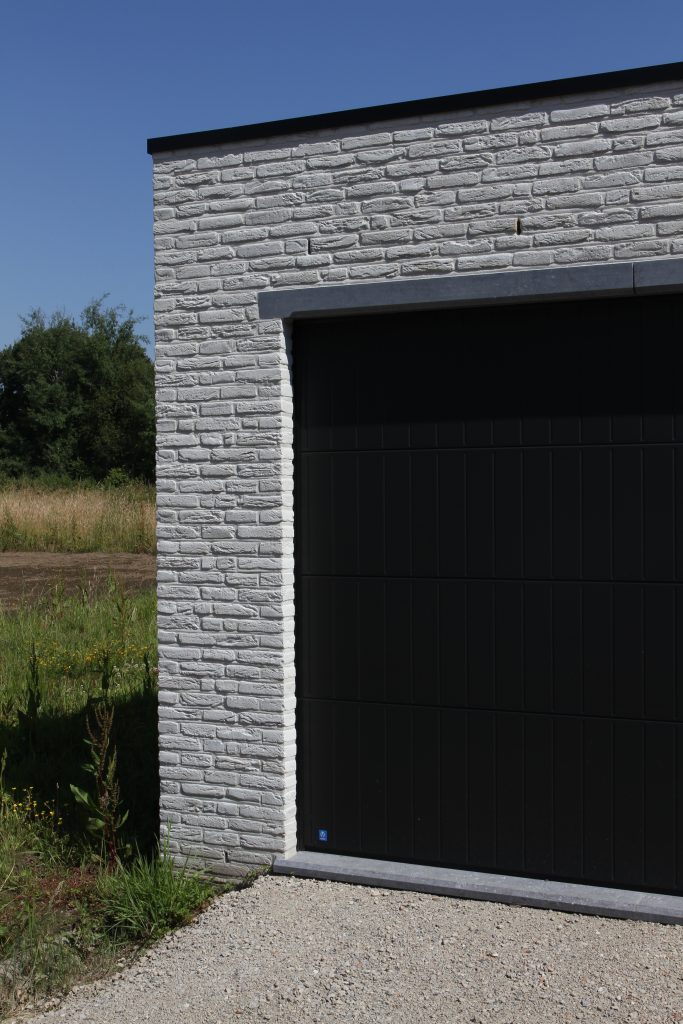
Why a garage sill in natural stone ?
A garage sill in natural stone is chosen for a number of compelling reasons:
1. Sustainability: Natural stone is extremely durable and resistant to abrasion, impact, and heavy loading, which is important for a garage sill that is frequently loaded by vehicles and foot traffic.
2. Weatherproofing: Natural stone is resistant to various weather conditions, such as rain, frost, and sun. This makes it an excellent choice for outdoor applications such as a garage sill, where the material is continuously exposed to the elements.
3. Aesthetics: Natural stone has a timeless, luxurious look that can add to the aesthetics of the garage and surrounding home. The material is available in a variety of colors and finishes, making it easy to choose a sill that matches the style of the home and driveway.
4. Water drainage: A garage sill made of natural stone can be effectively formed to direct water away from the garage. Due to the density and smooth surface of natural stone, water flows away easily, which helps keep the garage dry.
5. Maintainability: Natural stone is relatively easy to maintain. It is resistant to stains and dirt and can be easily cleaned with water and mild detergents. This makes it a practical choice for a garage sill that is often exposed to dirt and oil.
6. Home value increase: Using high-quality materials such as natural stone can increase the value of the home. Natural stone is associated with quality and durability, which can be attractive to potential buyers.
7. Stability and safety: Natural stone provides a stable and slip-resistant surface, which is important for safety when entering and exiting the garage, especially in wet or icy conditions.
In summary, a natural stone garage sill offers a combination of durability, aesthetics, and functionality, making it an excellent choice for both practical and decorative purposes.

We distinguish 2 types :
Flat
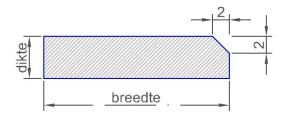
A flat garage sill is chosen for several practical and aesthetic reasons:
1. Accessibility: A flat garage sill makes it easier to drive vehicles in and out of the garage without obstacles. This reduces the risk of damage to vehicle tires or undercarriages and also makes it easier for bicycles, motorcycles and other vehicles to pass over the sill.
2. Safety: Because the sill is flat, it reduces the risk of tripping or falling. This is especially important in garages that are also used as work or storage areas, where people often walk in and out.
3. Aesthetics: Flat garage sills contribute to a clean, modern appearance of the driveway and garage. They provide a seamless transition between the exterior and interior spaces, contributing to the visual harmony of the building.
4. Easy cleaning: A flat sill is easier to clean because there are no raised edges where dirt, leaves or water can accumulate. This makes maintenance of both the garage and driveway easier.
5. Water drainage: Although the sill is flat, it can still be designed with a slight slope to direct water away from the garage. This helps prevent water accumulation and possible water damage inside the garage.
6. Compatibility with automatic garage doors: Flat sills are ideal for use with automatic garage doors because they allow the door to make a good seal without having to move over a raised edge, which can extend the life of the door and provide a better seal.
7. Suitable for various vehicles: Flat garage sills are suitable for a wide range of vehicles, including low-lying cars or vehicles with low suspensions, because there is no raised edge that could make contact with the vehicle.
In short, a flat garage sill offers practical advantages in terms of accessibility, safety, ease of maintenance, and aesthetics, making it a versatile and functional choice for many garages.
Option rounded side
Both types of garage sill can also be executed with a rounded edge:
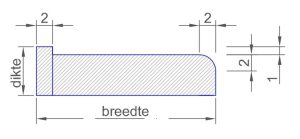
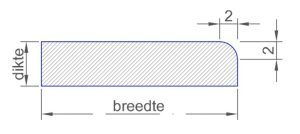
Flat with upstand
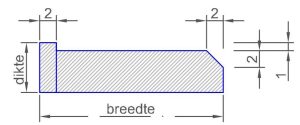
A garage sill with upstand offers several advantages that can contribute to the functionality and protection of the garage. Here are the main reasons to choose a garage sill with curb:
1. Watershed: The curb, a raised edge at the edge of the sill, effectively helps stop water. It prevents rainwater, melting snow, or other forms of moisture from entering the garage. This is crucial in protecting the floor and interior of the garage from water damage.
2. Dirt and dust barrier: The curb helps keep dirt, leaves, and other contaminants out of the garage. This reduces the amount of dirt entering the garage, making maintenance easier and creating a cleaner environment.
3. Garage door protection: The upstand provides additional protection at the bottom of the garage door. It prevents the door from coming into direct contact with water or dirt on the floor, which can contribute to longer door life and better sealing.
4. Draught excluder: The curb helps reduce drafts and air intrusion by forming an additional barrier between the outside air and the inside of the garage. This can help keep the garage better insulated, especially if it is used as a workspace or storage area.
5. Stability and safety: The curb can help provide a stable and safe transition between the driveway and garage floor. It prevents vehicles from driving over too sharp an edge and can help prevent accidents or damage to vehicles.
6. Aesthetics: Garage sills with curb can contribute to a finished and neat appearance of the garage. The curb can offer a visually appealing finish and provide a neat transition between the driveway and garage floor.
7. Protection of the floor: The raised edge prevents water and dirt from getting directly onto the garage floor, which can help protect the floor from wear and stains. This can be especially useful for floors prone to damage from moisture and dirt.
In summary, a garage sill with upstand offers a combination of protection from water and dirt, improvement in insulation, and aesthetic finish, making it a valuable choice for many garages.
